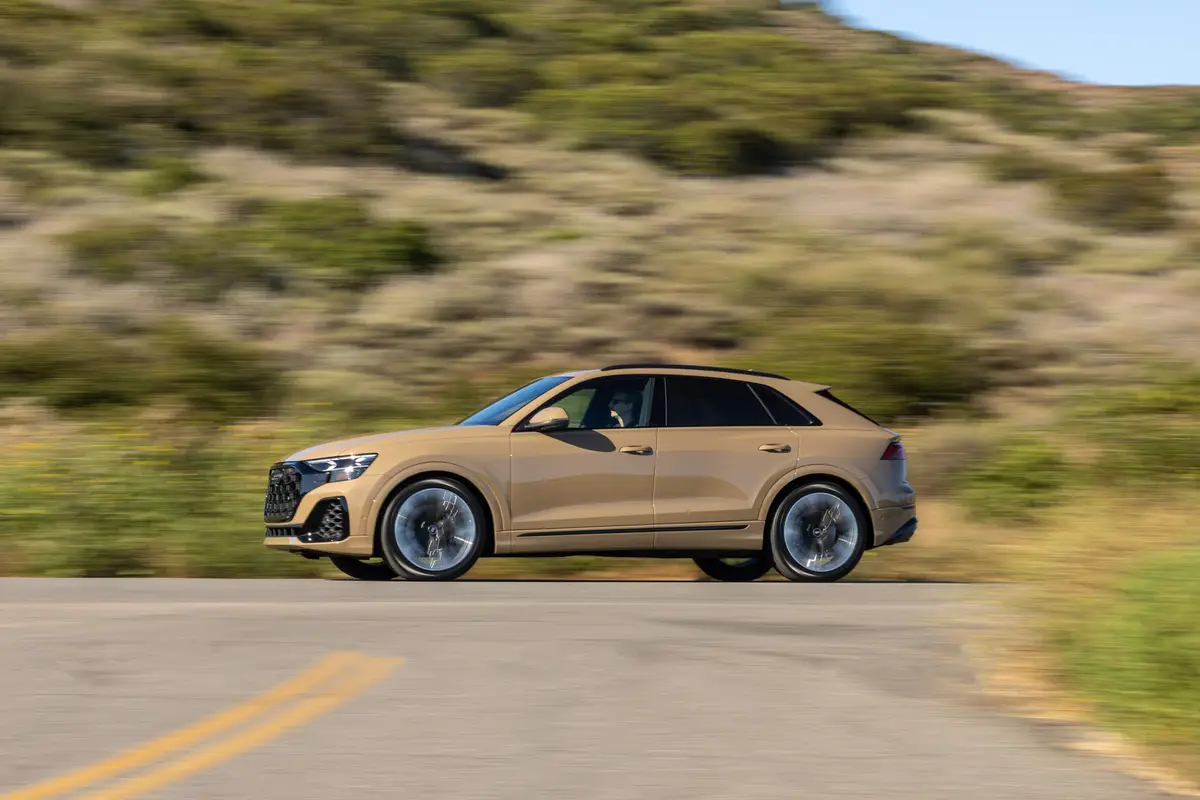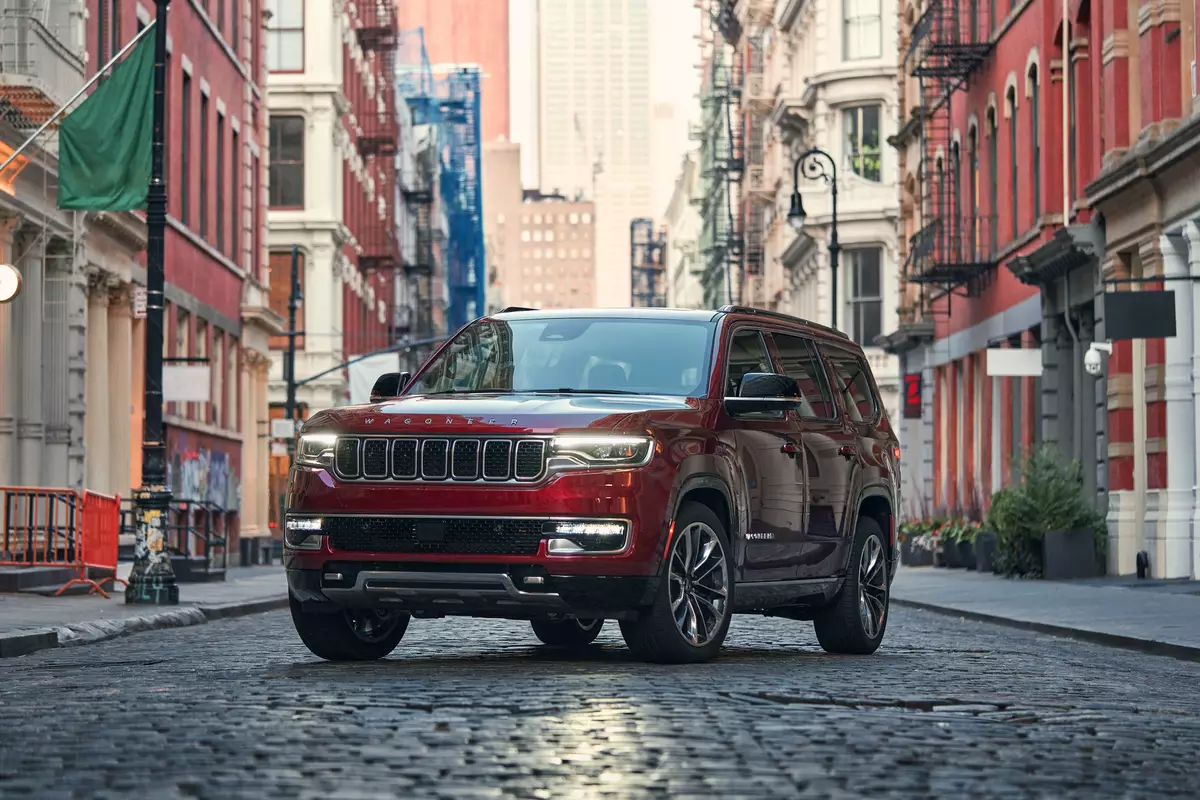chicagotribune.com's view
`Suzuki . . . didn’t they make the Samurai?” the wife asked when the Suzuki Grand Vitara arrived in the driveway.
Some folks still remember the Samurai, the teeny tiny sport-utility vehicle from Suzuki that was about as solid as an aluminum can.
Samurai became popular before sport-utes came in vogue, only the popularity didn’t last long for the Samurai (terrible name, but then, if General Motors had given it a moniker, it probably would have been Hara-Kiri) because it was perilously small. It looked smaller on the road than in the showroom.
Then came the Sidekick–larger, a tad better-looking, but it still would vibrate and shimmy when you closed the door as the distinctive and disheartening sound of a frail “ting” filled the air.
Being small, cute and available with four-wheel-drive for off-roading or beach travel, small Suzuki sport-utes were attractive to younger drivers who, sadly, had the least experience in motoring around in a tin can.
Suzuki has made a major improvement for 1999 with the introduction of the Vitara and Grand Vitara, vehicles that signal goodbye to Sidekick, good riddance to Samurai.
The “Grand” designation means it’s powered by a 2.5-liter, 155-horsepower V-6 rather than the 2-liter, 127-h.p. 4 in the Vitara. Grand also means it comes in four-door version only, whereas Vitara comes in four-door hardtop or two-door soft top.
We tested the Grand Vitara in top-of-the-line JLX+ trim, meaning everything is standard. The only extra you’ll have to buy is insurance.
The first move, once the vehicle arrived, was to walk out to the drive, open the door, then slam it and wait for it to perform its ritual song and dance to the god of tin.
Didn’t happen.
Solid.
Rather than “ting” came “thud.” A pleasant and long-overdue surprise.
That task done, it was time to give Grand Vitara a closer look. It’s a cross between the pleasantly stylish sheet metal of the Kia Sportage and the narrow, cinched-waist body panels on the Toyota RAV4.
Though about two inches wider than Sidekick, Grand Vitara tends to favor the cinched-waist of the RAV4. The body, just about amidships, seems to be held in by a corset.
Thankfully, though, like the RAV4, it also features plastic lower body and wheel-well covers to ward off rust as well as parking-lot dents and dings. Nice touch for keeping the vehicle looking like new longer than if it had flat, slab-sided doors with no plastic to resist pock marks.
However, the test vehicle came in “Planet Gold” color. Let’s just say the greenish yellow gold stands out in the parking lot–in total darkness. The 40- to 50-somethings might find Planet Gold a bit too bold, but youth will like it. And parents of youth should appreciate the fact that a color that stands out in the crowd makes a vehicle safer in that crowd.
Inside, Grand Vitara feels very much like a RAV4 in that it’s a tad narrow. Headroom is outstanding, armroom spacious , legroom more than adequate, but hip and thigh will be pressed against the armrests. As long as Suzuki realized a shortcoming and added two inches of width in remaking Sidekick, it should have opted to set a benchmark in mini-sport-utes and added two inches more for optimum comfort.
The cloth seats are cozy. The pattern stylish without being outlandish. Controls are all within sight and easy reach. Cupholders are built into the center console for maximum hold without movement.
A transfer case along the console allows shifting into and out of 4WD as the need arises.
Ride is decent, so is handling, thanks in large part to the bigger paw-print 16-inch radials strapped to each wheel.
A shortcoming, however, is the 2.5-liter V-6. Suzuki makes the Vitara and Grand Vitara for itself and a version called Tracker for Chevrolet. Suzuki and Chevrolet are in a little flap over engines. The Japanese automaker offers the 4-cylinder and V-6, but gave Chevy only the 4-cylinder.
Ma ybe Chevy will eventually get the V-6, maybe Chevy will add its own V-6. Whatever happens, the 2.5-liter V-6 in Grand Vitara was not exactly a powerhouse. The 4-speed automatic is an overdrive unit, and you must press the button on the gearshift lever to get out of overdrive to get more performance than fuel economy out of the V-6.
If you thought, “Wow, a V-6 in a mini-sport-ute; this thing should fly,” be prepared for less muscular performance than anticipated.
When out of overdrive, the V-6 has more spirit; when left in overdrive, you’d be hard pressed to tell whether it was a V-6 or 4 cylinder under the hood. The V-6 had one other shortcoming–a surprisingly low 18-m.p.g. city/20-m.p.g. highway fuel-economy rating for a mini-sport-ute. The fact Grand Vitara tips the scales at about 3,200 pounds hints at why a more acceptable 20/22 m.p.g. or an even better 20/25 m.p.g. rating wasn’t achieved.
But then, as we said, when you slam the door, the vehicle doesn’t shimmy or shake. So if the price paid for a more solid and stable vehicle is a couple miles per gallon, we can live with that. But we still reserve the right to curse the V-6 at the pump.
Noteworthy Grand Vitara features include four-wheel anti-lock brakes as standard on any “+” model, a full-size spare mounted on the swing-out rear door (one piece, with window), a spacious cargo hold with plastic security curtain to hide items, rear seats that fold forward and seat backs that fold flat for added cargo capacity, and a slew of small trays, bins and compartments to store things throughout the cabin.
The four-door Grand Vitara JLX+ also comes with a 17.4-gallon fuel tank (needed); alloy wheels; dual power, remote-control mirrors; power steering; rear window wiper/washer/defogger; trip odometer; air conditioning; dual air bags; power windows and door locks; rear door child locks; remote keyless entry (the all-black buttons aren’t easy to see at night); AM/FM stereo with cassette; tinted glass; cruise control; passenger-side visor vanity mirror (better not be too vain because the mirror is Barbie sized); full carpeting; and body-colored bumpers.
Heck of a package for a base price of $20,999 and the only extra is $430 for freight. Sorry, no sunroof, which would be a nice option.
At $20,999, those more infatuated with value than RAV4 heritage might want to take a peek at a Suzuki.
>> 1999 Suzuki Grand Vitara JLX+
© 1998 Chicago Tribune Wheelbase: 97.6 inches Length: 164.6 inches Engine: 2.5-liter, 24-valve, 155-h.p. 4-cylinder Transmission: 4-speed automatic Fuel economy: 18 m.p.g. city/20 m.p.g. highway Base price: $20,999 Price as tested: $20,999. Add $430 for freight Pluses: Monumental improvement over the old Sidekick. More solid, more stable. ABS now standard. 4WD for all-season travel. Spacious ca rgo hold. Spare mounted on rear door. Minuses: About 2 inches longer and wider than Sidekick but could have used at least 2 more inches in width for added cabin room. Mileage rating for this mini-sport-ute should be at least 2 m.p.g. higher in city and highway driving. >>
Latest news



